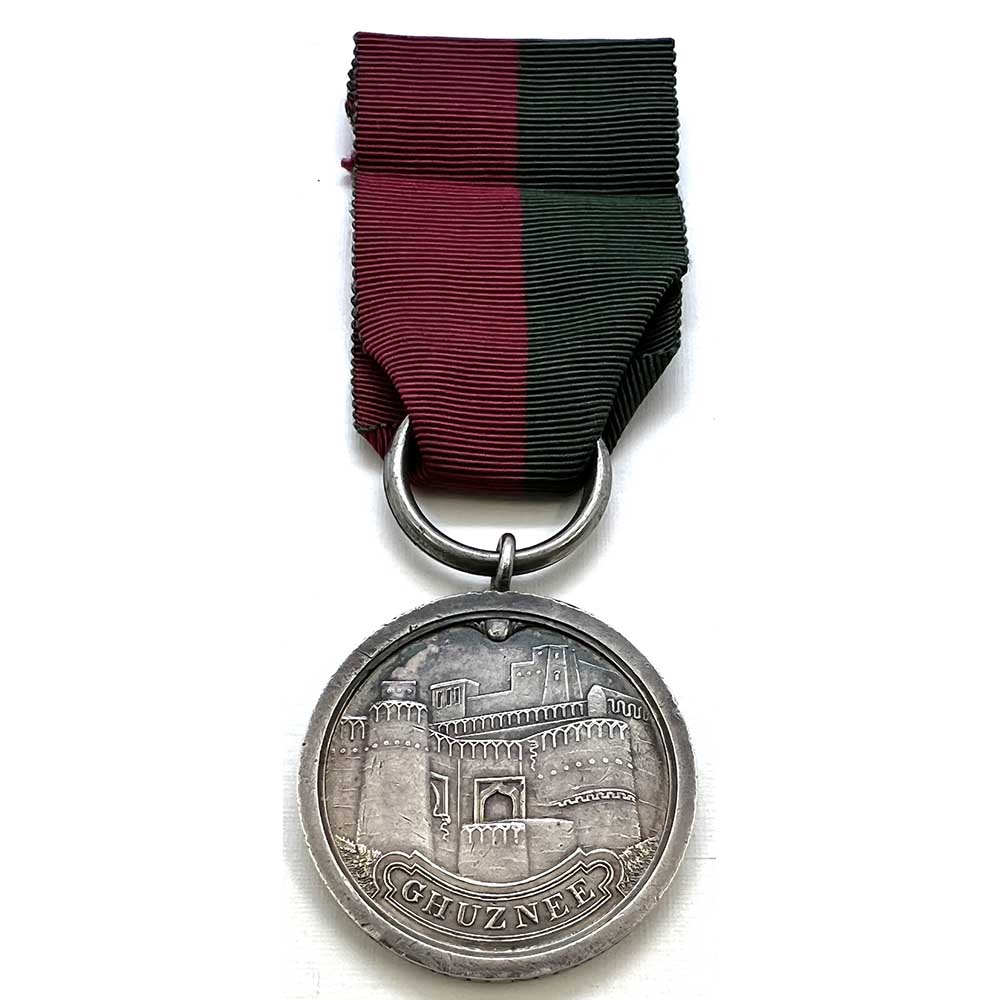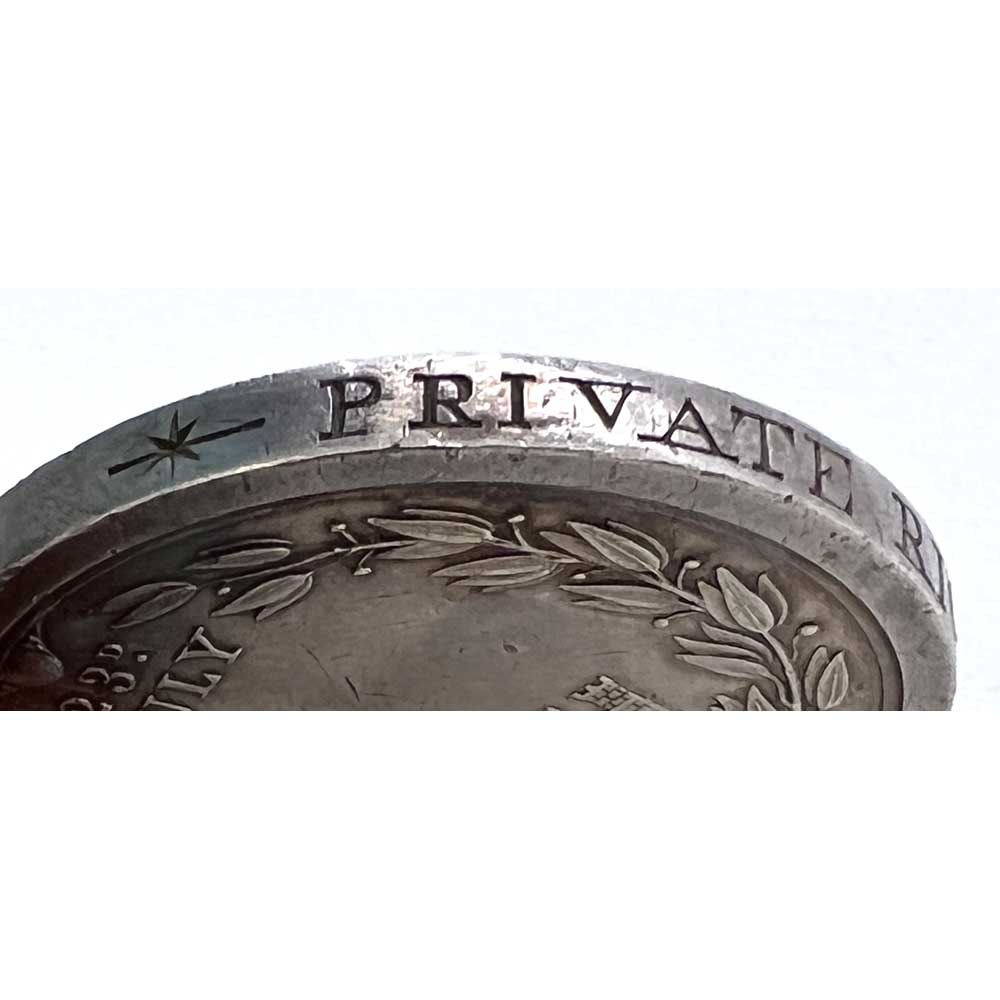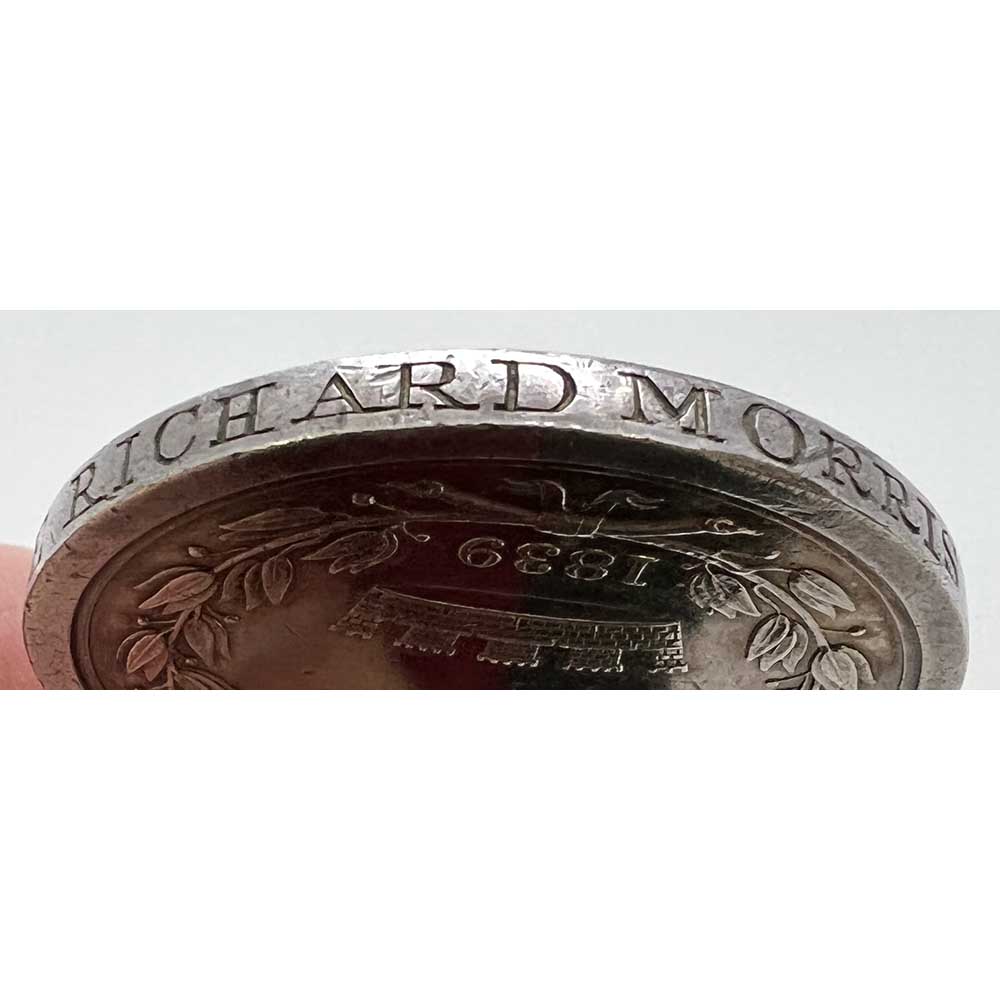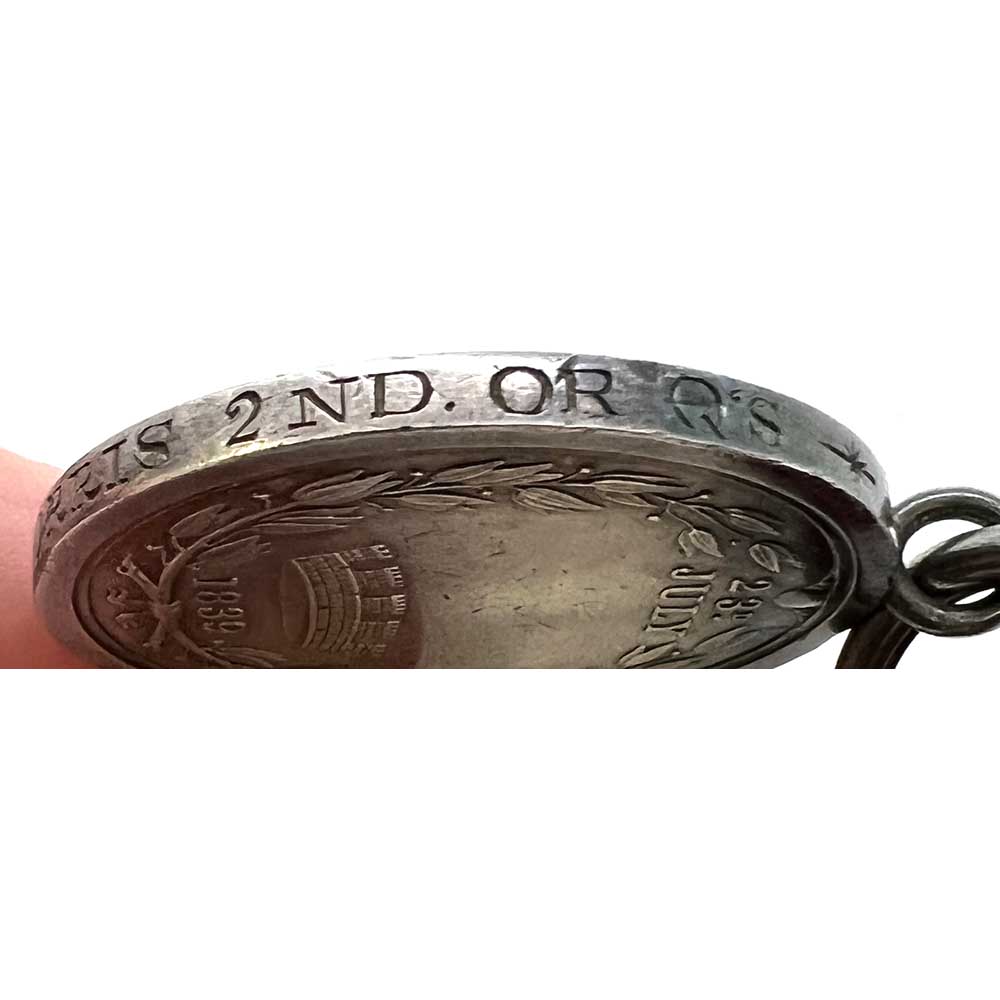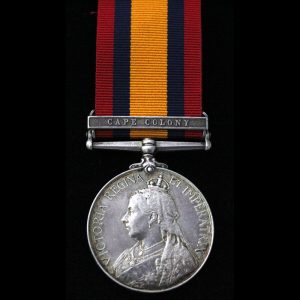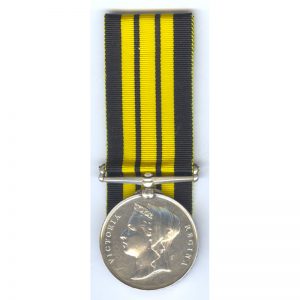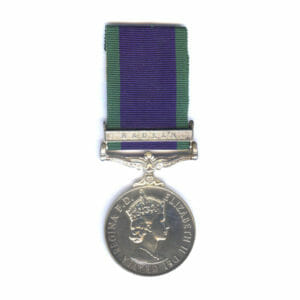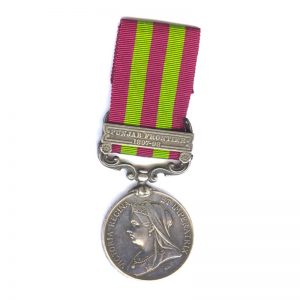Description
Ghuzee Medal, 1839, Private Richard Morris, 2nd or Queen’s Royal Regiment of Foot.
Engraved on the edge in contemporary serif capitals with stars to note beginning and end:
“* PRIVATE RICHARD MORRIS 2ND. OR Q’S”
Service in Brief:
Richard Morris, an Irishman from Mulrankin, Wexford, signed up at Liverpool on 30th Nov 1824.
The 2nd Queen’s Embarked for India in February 1825, where Pte Morris would spend the next 18 Years 11 Months of overseas service.
Served in the Battle of Ghuznee, 23rd July 1839 where the regiment stormed the Fortress at Ghazni.
Total service by the time of his discharge as unfit was 21 years 91 days, being discharged on 28th February 1846.
No 439, Private Richard Morris, was born in Mulrankin, County Wexford, Ireland, circa 1804.
Having likely taken the boat trip over to the Port of Liverpool from Ireland, he attested for service there, stated to be 5 foot 11 3/4 inches tall, brown eyes and dark hair, he stated his previous occupation was as a Shoemaker.
He officially attested on 30th November 1824, claiming a bounty of £3, with another 2 Shilling and 6d for joining the 2nd or Queen’s Regiment of Foot. being signed up by a Sergeant Robert Howarth.
He was then intermediately approved for service at Liverpool on 2nd December 1824 being posted down to Chatham being again approved for service on 3rd January 1825.
Soon afterwards, in early February 1825, the regiment, consisting of 32 Sergeants, 20 Drummers and 740 Rank and File, under the command of Lieut Col J. Williams, marched from Chatham and embarked at Gravesend for Bombay, where it arrived in the beginning of June 1825.
For Private Morris, he would be spending close to the next 19 years stationed around India.
The regiment assembled at Bombay upon arrival and marched to Poonah, the Capital of the Deccan, in which cantonment it arrived early in 1826.
Some interesting service upon arrival was when according to the regimental history:
“From Poonah 4 companies of the Queen’s Royals were detached in September, 1827, on an expedition against the Rajah of Koolapore, in the Mahratta country, south of Bombay.
The light company of the Queen’s, with the Light Companies of the 20th and other regiments, were formed into a light battalion, under Lt Col Robert Place, of the Queen’s, and proceeded for the above destination.
The service terminated the same year by the surrender of the territory and the capitulation of the Rajah.”
An interesting anecdote follows from this: “When Lt Col Place was ordered to Koolapore, he was so far gone in constituion, that his medical advisors suggested the propriety of relinquishing the attempt to proceed on active service.
‘I go – If I die on the road,’ was the reply of this respected officer.”
In 1831, the regiment marched to Bombay, to take a tour of duty at the Presidency and occupied its former cantonments at Calaba.
It was noted in the next few years that the 2nd Queen’s enjoyed particularly good health in the time, having survived the monsoon of 1831, seeing little casualties from disease and the climate, even keeping drunkenness in check and altogether keeping the hospital mostly without a single soldier to occupy it.
In 1834 they were relieved by the 40th Regiment and returned to their cantonments in the Deccan.
Leading up to the First Afghanistan War of 1839 onwards, the regiment was on garrison duty near Baluchistan, when they were mobilised with the “Army of the Indus”.
They then formed part of the gallant force that attacked the previously thought to be impregnable walled city of Ghazni.
Having to take the city by storm because the Army lacked siege equipment, which opened the road to Kabul.
At Ghuznee, the 2nd Queen’s were part of a column of 27000 troops who invaded Afghanistan, the Queen’s forming part of Brigader General Wilshire’s 1st Brigade.
The local conditions were terrible, there was a large shortage of food, no roads coupled with extremely hot temperatures, not helping was the uncomfortable uniforms.
In June the force had marched the 700 miles to Kandahar when it became clear that the Fortress of Ghuznee had to fall in order for Kabul to be taken.
Their was no siege equipment available, so instead the fortress had to be stormed. The weakest point was determined to be the Kabul Gates, and under the cover of darkness, a party of Sappers blew the gates up at first light on 23rd July 1839.
The Queen’s then took part in the assault, during which they lost 4 killed and 33 wounded, including 6 Officers.
By 8th August they had reached Kabul. Ghuznee would be the first Battle Honour awarded to the 2nd Queen’s under the reign of Queen Victoria.
A large portion of the Army was then sent back to India, as it was wrongly thought that the occupation force would be safe.
The Queen’s withdrew to India via the Bolan Pass in the south. Willshire was in command and was told to inflict punishment on the Khans of Khelat en route, because of their constant attacks on the British forces.
The Baluchis were seen to be massed on the hills above the town, so Willshire deployed his force into three columns to push up the spurs, while his artillery gave support from the centre. The tactic worked, the enemy retreated and there was a race for the walls of Khelat; after some hard fighting, the British were triumphant.
The Queen’s returned to India, before disaster befell the remaining force in Kabul on their attempted withdrawal from the country. Having returned to India early, they were lucky to have avoided the destruction of “Elphinstone’s Army” who were largely massacred in the retreat from Kabul during 1842.
Having returned home from India after a long 18 years 11 months, 42 year old Richard Morris was discharged at Chatham on 10th March 1846.
He was found by the Surgeon of the Regiment to be unfit for further service, due to his extensive career he had rheumatic pains and Hydrocele in India.
